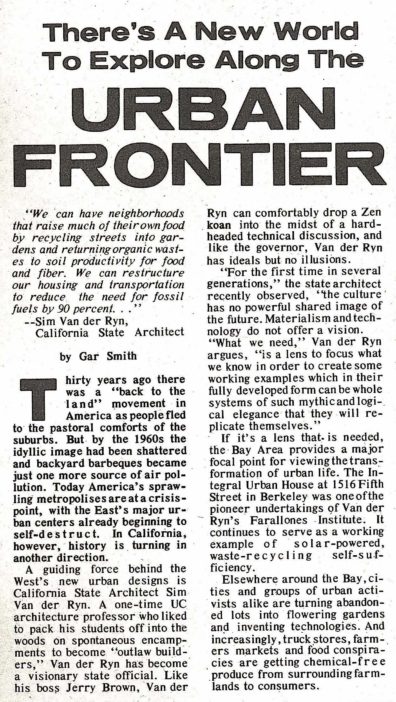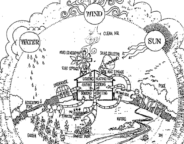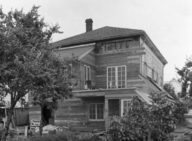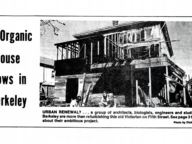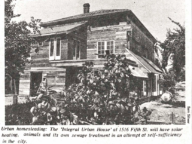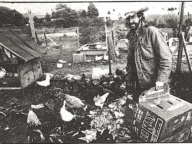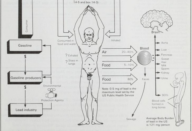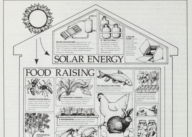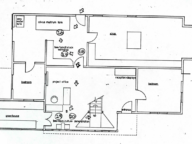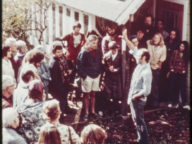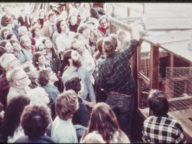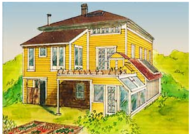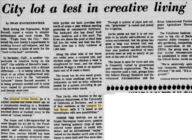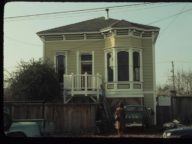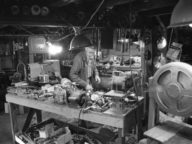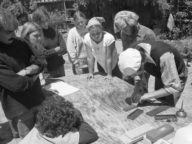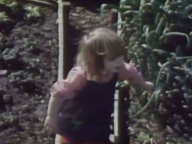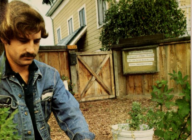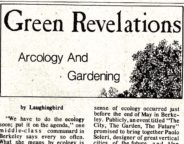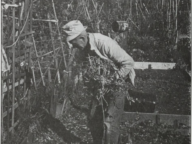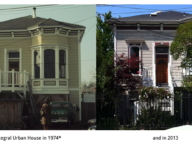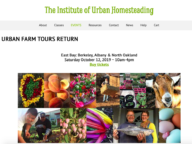On March 17, 1978, The Berkeley Barb devoted almost four full pages to the “Back to the City” movement within Berkeley — the movement to take back urban land for green space and food production. Reporting sympathetically on the movement, which was both an offshoot and a reaction to the “Back to the Land” movement, it promoted urban homesteading as an exciting foray into the “urban frontier.”
Taken together, the “Back to the Land” coverage (full download here or via the link on the right) sketches the larger landscape of urban homesteading and self-sufficiency across the East Bay. It also suggests the larger context for the Integral Urban House experiment, and how the IUH helped fuel related experiments in urban homesteading.
***
The “Back to the City” section opens with a visionary header: “There’s a New World to Explore Along the Urban Frontier”. Gar Smith advises that one does not need to look any further than their own urban backyard to discover new ways of living, such as composting wastes and generating solar power. It uses the figure of Sim Van der Ryn and his connection to then-Governor Jerry Brown to legitimize a new conception of the future not solely based on materialism and technology. The picture underneath highlights the potential in small actions like raising chickens in the city. One can reap the benefits by collecting eggs, meat, and manure from a single animal.
The second page introduces the “Homesteading Beneath the Skyscrapers” article, and continues the “There’s a New World to Explore Along the Urban Frontier” article. The former piece reports on the Oakland urban homesteading program, a system by which families can take possession of dilapidated homes for $1 (plus closing costs) if they renovate it with building standards and live in it themselves. Mostly located in East Oakland between Fruitvale and San Leandro, the program let governments sell homes and revitalize neighborhoods. However, one could also view this as intended gentrification, as the area was – and still is – a predominantly Latino working-class neighborhood. The white author and largely white audience might be oblivious to these racial politics, or choose not to address them.
The bottom article details the multiple urban farms springing up in Berkeley at the same time as the Integral Urban House. It demonstrates the movement was dispersed across different groups and experiments. Many farms laid in the formerly industrial West Berkeley, where the flat land and cheaper rents were. The article discusses Tom’s Market, an open-air truck store in South Berkeley, and the organic produce donations that make their prices so low. It also mentions the Integral Urban House and a proposal to the City of Berkeley to cede two blocks in West Berkeley for an “Integral Urban Neighborhood”, creating a “community in which the various parts and systems (ecological, economic, architectural, social and political) are consciously connected.”
A large ad at the bottom for “Antioch College/West” was actually co-founded by Helga and Bill Olkowski of the Farallones Institute. It sought to provide training and certification in areas that the Institute specialized in, such as environmental design and neighborhood planning.
Finally, the third page provides a list of Bay Area resources for “greening your block”, as the header implies. The list taps into the current (at the time) projects and organizations working with ecology and community engagement. For the resources in Berkeley and San Francisco, the descriptions offer specific features for each organization. The Berkeley Parks Department offered “free “garden plot” lots”, while the Earthwork, Center for Land and Food had a “meeting space, community action projects, educational materials, library.” The author compiled this information to help curious readers get involved with these organizations. More outreach and visibility meant better efforts to build a stronger, more connected community equipped with ecological knowledge to teach and pass down to others.
A very apt ad for Birkenstock sandals (on the right) feeds into the image of an earth-loving hippie, one who would want to ‘feel the wind through their toes’ as they stand in the garden. The ad states that “walking in Birkenstock is a lot like walking barefoot in the sand,” tapping into this enjoyment of walking and feeling the earth under one’s feet. It would not be surprising to see many people wearing Birkenstocks when checking out the green organizations listed to the left.
